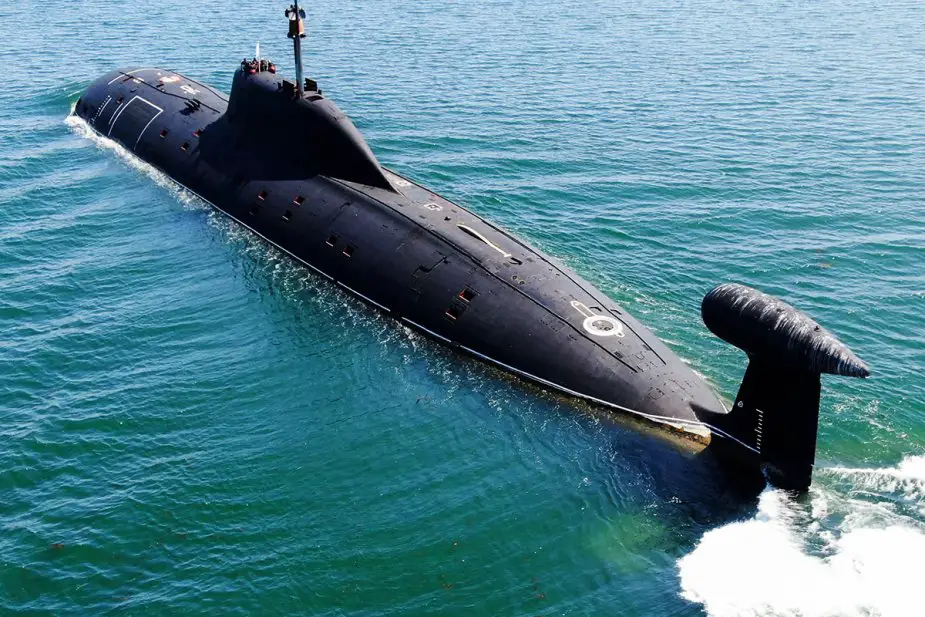Breaking news
Three Russian nuclear-powered submarines return to Kamchatka from Pacific missions.
According to information published by Tass on July 18, 2022, a Shchuka-B class nuclear submarine of project 971 and two Antey-class nuclear submarines of project 949A returned to Kamchatka from Pacific missions.
Follow Navy Recognition on Google News at this link
 Russian Akula class submarine Kuzbass (Picture source: Russian MoD)
Russian Akula class submarine Kuzbass (Picture source: Russian MoD)
Commander of the Pacific fleet underwater forces Rear Admiral Vladimir Dmitriev congratulated the crews of the Omsk, the Tomsk, and the Kuzbass submarines on successful missions.
About the Akula class submarine
The Akula class, Soviet designation Project 971 Shchuka-B are a series of nuclear-powered attack submarines (SSNs) first deployed by the Soviet Navy in 1986.
The Akula incorporates a double hull system composed of an inner pressure hull and an outer "light" hull. This allows more freedom in the design of the exterior hull shape, resulting in a submarine with more reserve buoyancy than its western analogs.
The distinctive "bulb" or "can" located on top of the Akula's rudder houses its towed sonar array when retracted. Most Akulas have the wake detection system (SOKS) hydrodynamic sensors, which detect changes in temperature and salinity. They are located on the leading edge of the sail, on the outer hull casing in front of the sail, and on the bottom of the hull forward of the sail.
Akulas (excluding Nerpa) are armed with four 533 mm torpedo tubes which can use Type 53 torpedoes or the RPK-2, RPK-6 missile, and four 650 mm torpedo tubes which can use Type 65 torpedoes or the RPK-7 missile.
These torpedo tubes are arranged in two rows of four tubes each. The external tubes are mounted outside the pressure hull in one row, above the torpedo tubes, and can only be reloaded in port or with the assistance of a submarine tender. The 650 mm tubes can be fitted with liners to use the 533 mm weaponry. The submarine is also able to use its torpedo tubes to deploy naval mines.


























